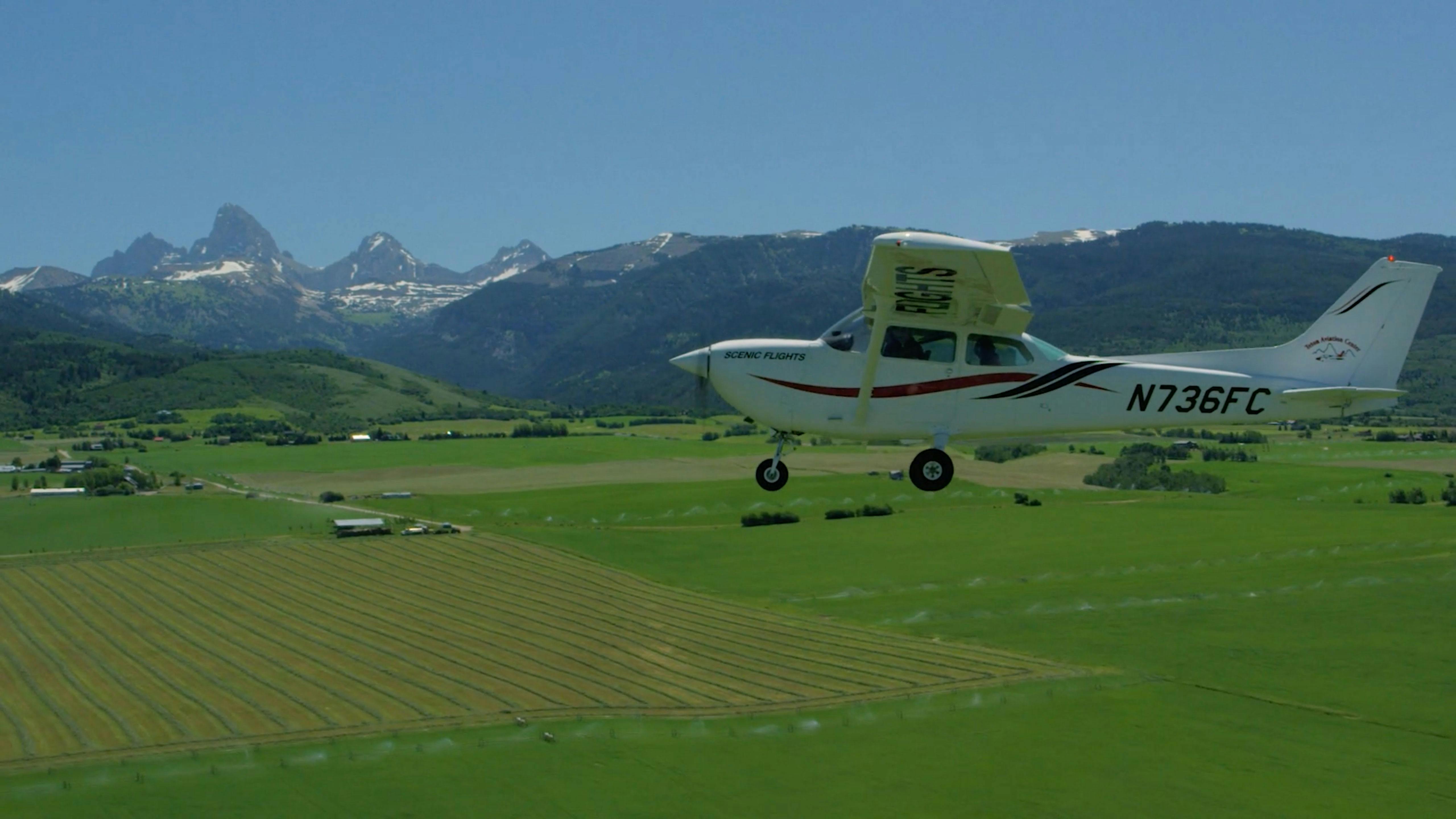
Contact Information
Driggs-Reed Airport
253 Warbird Lane
Driggs, Idaho 83422
Teton Aviation (FBO)
Phone: (208) 354-3100
Airport Superintendent
Billy Cyr
Phone: (208) 354-2362
Email: bcyr@driggsidaho.org
Hours: Monday-Thursday 8:00 a.m. - 5:00 p.m.
Closed Fridays and Federal Holidays
KDIJ Noise Abatement
Support the Airport's Good Neighbor Policy
Pilots: Driggs Airport is in a highly noise sensitive environment. Please help KDIJ be a good neighbor by following the recommended Noise Abatement Procedures.
Voluntary Noise Abatement Procedures
- AVOID flight operations between 2200 and 0700 local.
- Please observe these quiet hours unless an emergency exists.
- Aircraft with a Gross Takeoff Operating Weight in excess of 12,500 pounds should not be operated before 7:00 AM.
- Right Traffic Pattern Runway 22
- Traffic Pattern Altitude: 1000 AGL
- Use best angle (Vx) for first 500 feet . . . then best rate (Vy) to achieve maximum altitude.
- Avoid shallow climbs and gain as much altitude as safely possible before leaving the airport.
- Intersection departures are discouraged.
- Avoid flight over residential areas. Arrivals and departures over highways are preferred.
- Pattern altitude: 7,231 light aircraft. 7,731 heavy aircraft.
Quiet Hours: There are voluntary Quiet Hours on arrivals and departures between 10:00 p.m. and 7:00 a.m. As part of our "Good Neighbor" policy, we ask that you respect the Quiet Hours. The City of Driggs has adopted voluntary noise abatement procedures for the Driggs-Reed Memorial Airport. Pilots arriving and departing from the airport are requested to use every means at their disposal to reduce the impact of noise on the Teton Valley Community.
DOWNLOAD NOISE ABATEMENT PROCEDURES PDF
FAA Noise Complaint Information for Community Airports

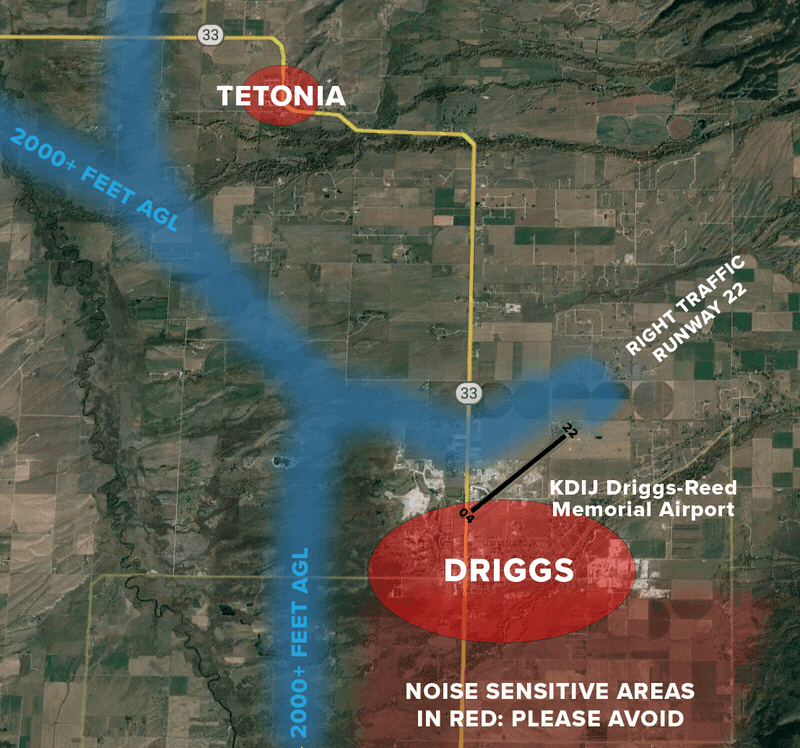
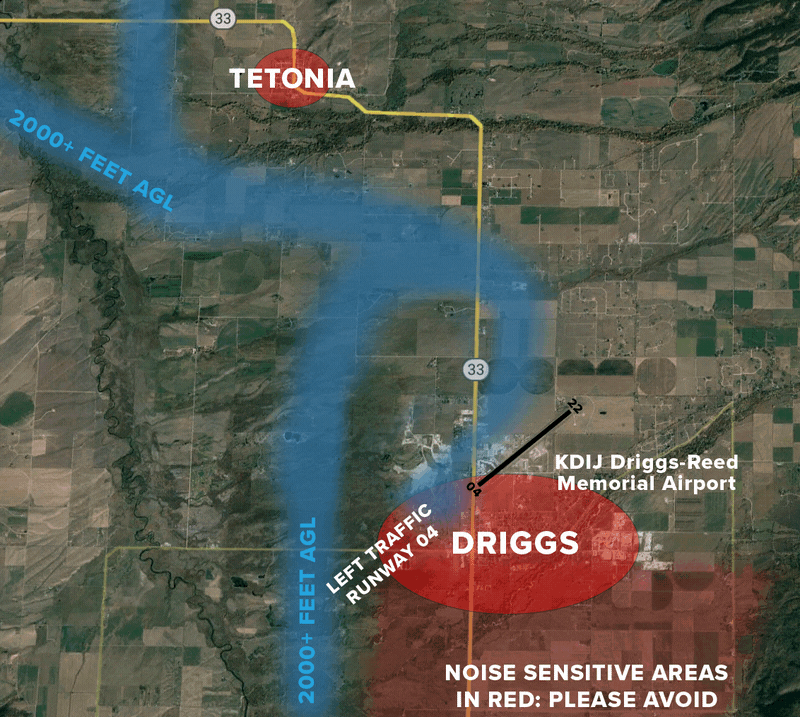
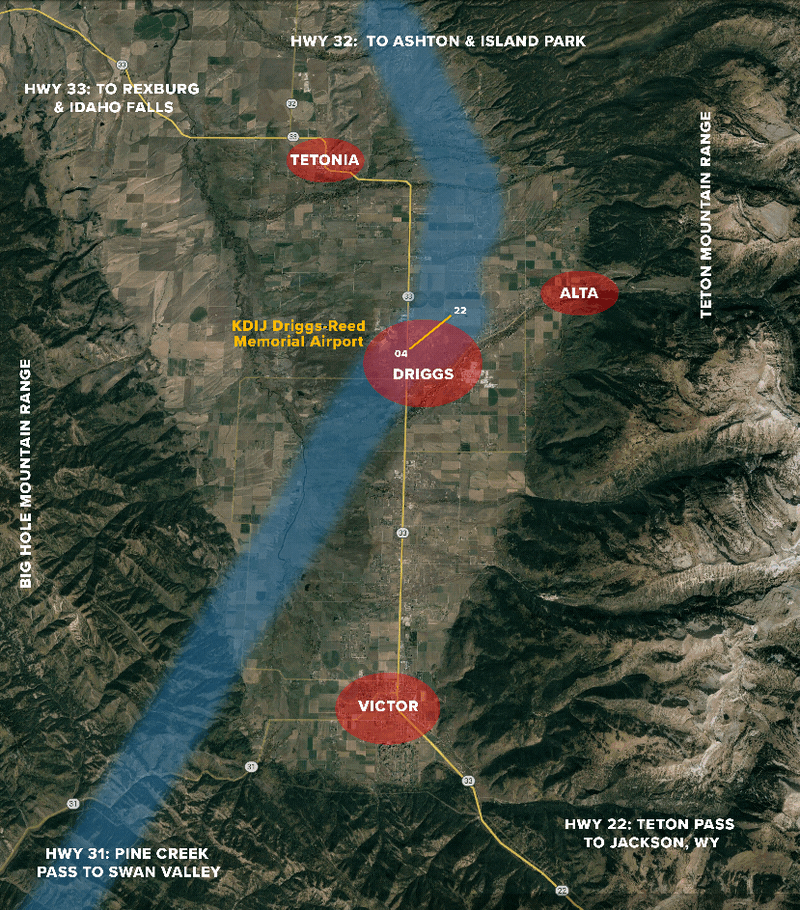
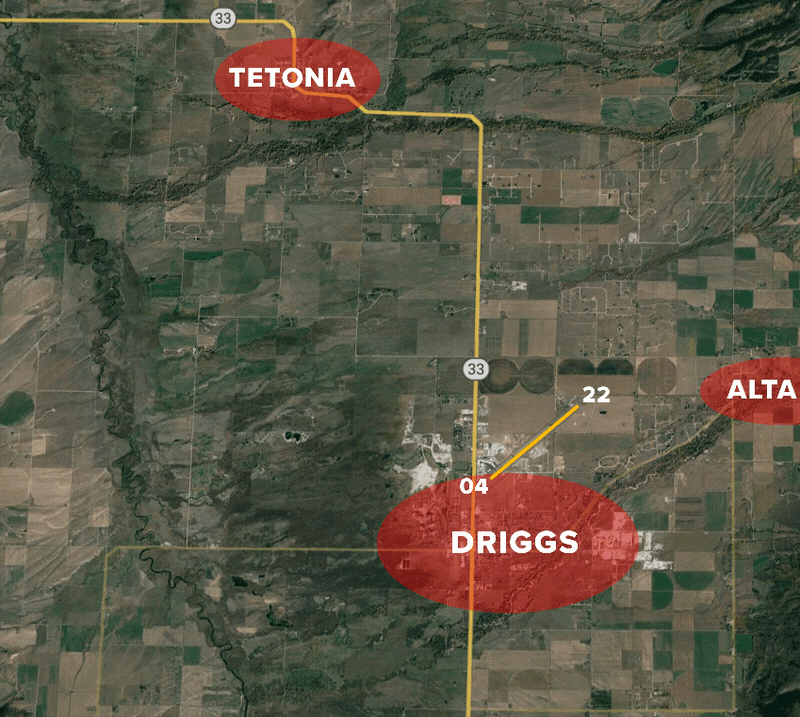
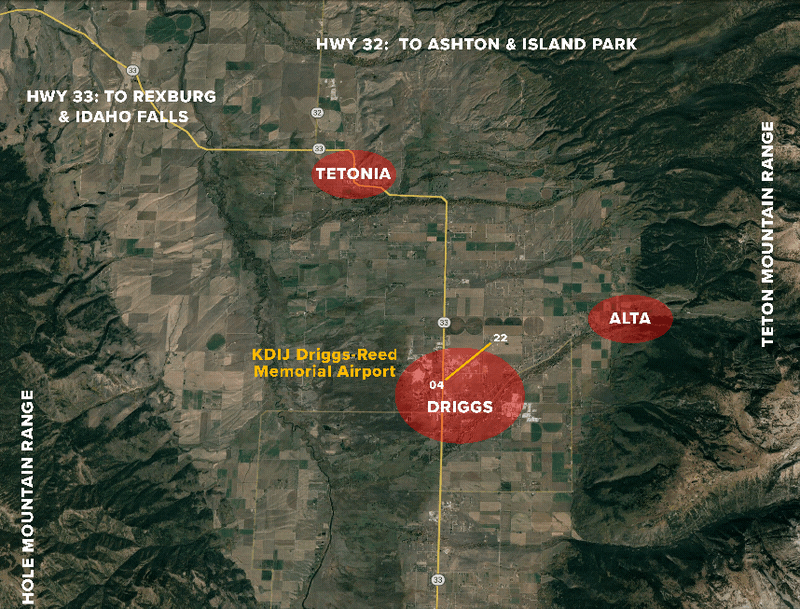
Pilots: Driggs Airport is in a highly noise sensitive environment. Please help KDIJ be a good neighbor by following the recommended Noise Abatement Procedures.
Voluntary Noise Abatement Procedures
- AVOID flight operations between 2200 and 0700 local.
- Please observe these quiet hours unless an emergency exists.
- Aircraft with a Gross Takeoff Operating Weight in excess of 12,500 pounds should not be operated before 7:00 AM.
- Right Traffic Pattern Runway 22
- Traffic Pattern Altitude: 1000 AGL
- Use best angle (Vx) for first 500 feet . . . then best rate (Vy) to achieve maximum altitude.
- Avoid shallow climbs and gain as much altitude as safely possible before leaving the airport.
- Intersection departures are discouraged.
- Avoid flight over residential areas. Arrivals and departures over highways are preferred.
- Pattern altitude: 7,231 light aircraft. 7,731 heavy aircraft.
Quiet Hours: There are voluntary Quiet Hours on arrivals and departures between 10:00 p.m. and 7:00 a.m. As part of our "Good Neighbor" policy, we ask that you respect the Quiet Hours. The City of Driggs has adopted voluntary noise abatement procedures for the Driggs-Reed Memorial Airport. Pilots arriving and departing from the airport are requested to use every means at their disposal to reduce the impact of noise on the Teton Valley Community.
DOWNLOAD NOISE ABATEMENT PROCEDURES PDF
FAA Noise Complaint Information for Community Airports